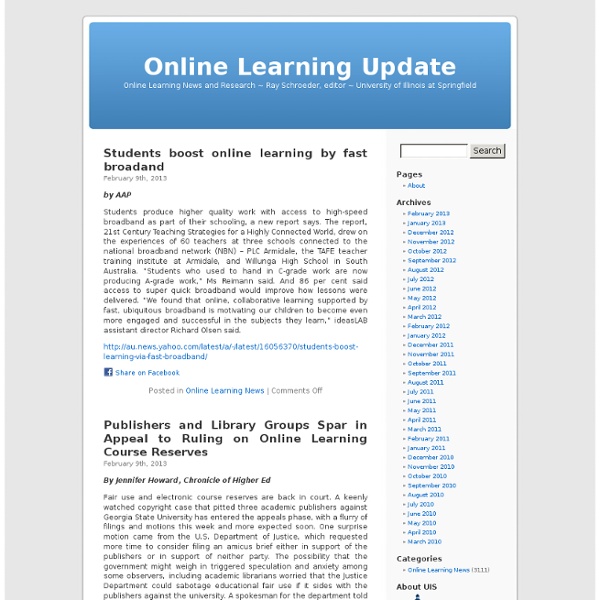Online Learning Update
Employers like MOOCs — if they know what one is April 15th, 2014 By Jake New, Editor, eCampus News MOOCs-employers-studentsEmployers are fans of massive open online courses (MOOCs), according to a new study by researchers at Duke University and RTI International. Share on Facebook An E-Portfolio With No Limits By David Raths, Campus Technology Students at the University of Mary Washington build their academic identities on their own personal Web domain. Share on Facebook Is Google Eyeing a Satellite Startup? By Zacks.com Rumor has it that Google Inc. is looking to acquire Skybox Imaging, a startup that manufactures satellites and deploys data analytics services to companies. Share on Facebook In conversation with: Sebastian Thrun, CEO, Udacity April 14th, 2014
Related: e-Learning Blogs
Harold Jarche
Mobilemind | Thoughts on mobile computing and elearning
E-Learning Curve Blog
Winter Solstice at Newgrange, Ireland 5,000 years ago, an extraordinary people lived in Ireland. They were farmers, hunters and builders. Newgrange – exterior (image courtesy SacredSites.com) I don’t spend all my time involved in learning and development. No, no, no. Among my more arcane, but nevertheless very satisfying interests is in the culture of the Neolithic (New Stone Age), and particularly the culture of the Beaker People of Western Europe. At ten minutes to nine on the morning of the shortest day of the year, a pale and weak sun slowly rises above a ridge in the Boyne River valley in County Meath, Ireland. Newgrange is best known for the illumination of its passage and chamber by the winter solstice sun. Light Enters the Tomb at Newgrange (image courtesy Irish Times) At dawn, from 19th to 23rd December every year, a narrow beam of light penetrates the roof-box and reaches the floor of the chamber, gradually extending to the rear of the passage. The senior civil servant elaborated:
Corporate Training & e-Learning Blog
E-Learning Queen
e-Learning Acupuncture
I Came, I Saw, I Learned...
Corporate eLearning Strategies and Development
Related:



